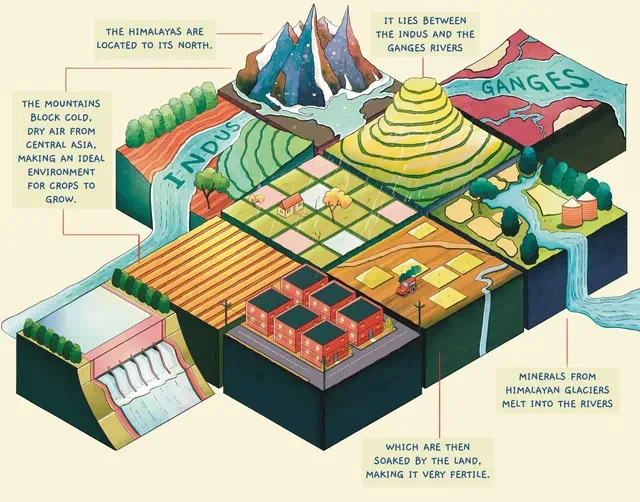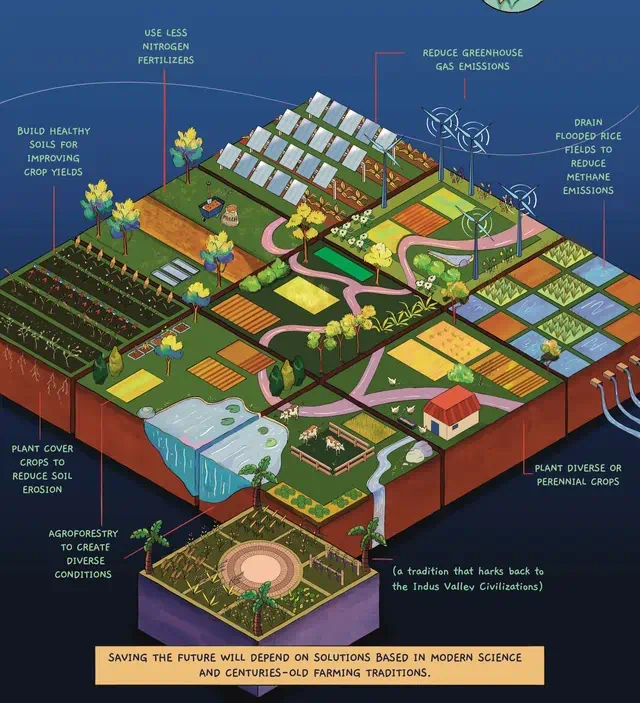Approximately 40% of India’s population, which amounts to 1.4 billion people, reside in the Indo Gangetic Plain, a relatively compact area. This is due to the plain’s vast fertility, as it spans 270,000 square miles and is considered one of the most fertile regions globally.

The Indo-Gangetic Plain’s fertile soil attracted farmers, but now it is being harmed by pollution caused by industries and farming practices. This has resulted in a high concentration of fine particulate matter (PM2.5) in the region, leading to a decline in air quality and a decrease in the average lifespan by seven years in the region.
Industrial pollution, cooking fuels, and car exhaust are causing changes in rainfall patterns and negatively impacting the monsoons.

The Indo Gangetic plains are at high risk from climate change due to their dense population and the “valley effect” caused by surrounding geographical features. The stagnant air in the region leads to increased levels of aerosols, which further contribute to the melting of Himalayan glaciers.

The consequences are already becoming evident in the Indo Gangetic plains as extreme weather events such as heavy rain, thunderstorms, tropical cyclones, and deadly heat waves have impacted almost 5 million acres of crop area in 2022.
India is responsible for about 40% of global rice exports and extreme weather events not only affect India but also other countries so in above infographics we have suggested few possible solution to save the Indo Gangetic plains while we still can.
Reference- The Washington Post Story, National Geographic, Wikipedia





